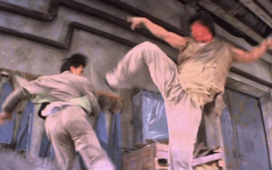A month ago, drones were spotted near Morris County, New Jersey. Since then, reports of further sightings in various locations in the region have been lodged on a daily basis, and anxieties about the origin and purpose of these unidentified flying objects have grown apace. “We have no evidence at this time that the reported drone sightings pose a national security or public safety threat or have a foreign nexus,” declared the FBI and the Department of Homeland Security in a joint statement. But the very lack of further information on the matter has stoked the public imagination; one New Jersey congressman spoke of the drones having come from an Iranian “mothership” off the coast.
If this real-life news story sounds familiar, consider the fact that Morris County lies only about an hour up the road from Grovers Mill, the famous site of the fictional Martian invasion dramatized in Orson Welles’ 1938 radio adaptation of H. G. Wells’ The War of the Worlds. Presented like a genuine emergency broadcast, it “fooled many who tuned in late and believed the events were really happening,” writes Space.com’s Elizabeth Fernandez.
The unsettled nature of American life in the late nineteen-thirties surely played a part, given that, “wedged between two World Wars, the nation was in the midst of the Great Depression and mass unemployment.” Some listeners assumed that the Martians were in fact Nazis, or that “the crash landing was tied to some other environmental catastrophe.”
In the 86 years since The War of the Worlds aired, the story of the nationwide panic it caused has come in for revision: not that many people were listening in the first place, many fewer took it as reality, and even then, drastic responses were uncommon. But as Welles himself recounts in the video above, he heard for decades thereafter from listeners recounting their own panic at the suddenly believable prospect of Mars attacking Earth.“In fact, we weren’t as innocent as we meant to be when we did the Martian broadcast,” he admits. “We were fed up with the way in which everything that came over this new, magic box — the radio — was being swallowed,” and thus inclined to make “an assault on the credibility of that machine.” What a relief that we here in the 21st century are, of course, far too sophisticated to accept everything new technology conveys to us.
Related content:
Edward Gorey Illustrates H. G. Wells’ The War of the Worlds in His Inimitable Gothic Style (1960)
Hear Orson Welles’ Radio Performances of 10 Shakespeare Plays (1936–1944)
Horrifying 1906 Illustrations of H. G. Wells’ War of the Worlds
Carl Jung’s Fascinating 1957 Letter on UFOs
Based in Seoul, Colin Marshall writes and broadcasts on cities, language, and culture. His projects include the Substack newsletter Books on Cities and the book The Stateless City: a Walk through 21st-Century Los Angeles. Follow him on the social network formerly known as Twitter at @colinmarshall.















